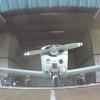Parallel parking the Mooney (don't try this at home)
-
Members Online
- Rick Junkin
- CaptBrad
- Mooney in Oz
- Marcopolo
- Healthpilot
- varlajo
- Yooper Rocketman
- Brandt
- Parker_Woodruff
- Steve Dawson
- Slick Nick
- Niko182
- KSMooniac
- Immelman
- CCAS
- Jarerh
- Shiroyuki
- hammdo
- Schllc
- Justin Schmidt
- hubcap
- TCC
- Mooney20J_Driver
- MusicCityMooney
- Robert Tanner
- James Garner
- natdm
- Raistlin
- eeaviationmx
- GMBrown
- hazek
- JoeM
- AndreiC
- Florian Guthardt


Recommended Posts
Join the conversation
You can post now and register later. If you have an account, sign in now to post with your account.